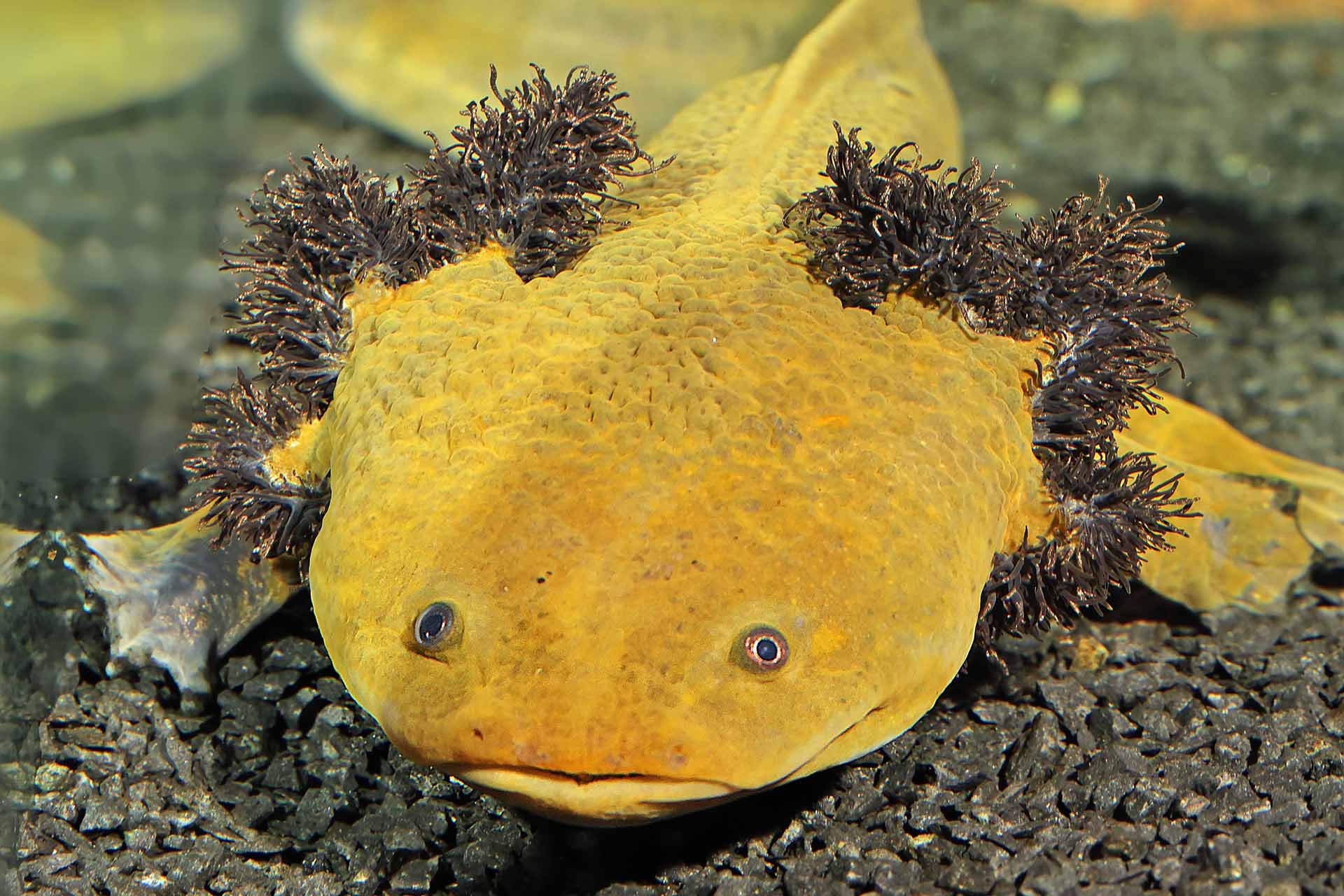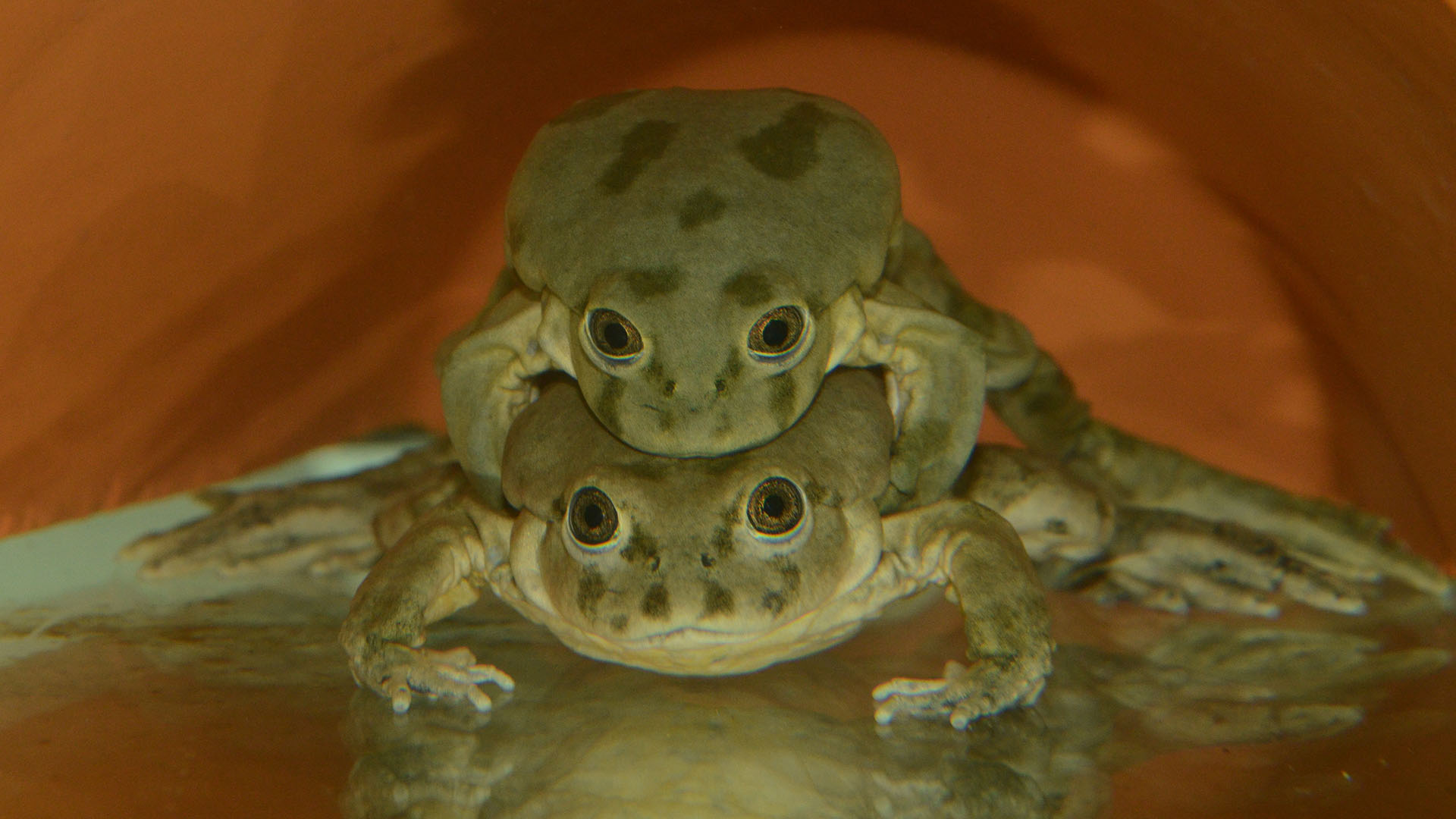
Pilot phase on final approach – semi-annual report as of May 1, 2022
Citizen Conservation is nearing the end of its five-year pilot phase. During this time, we wanted to “show that it works”. In this case, “it” is the idea of setting up coordinated conservation breeding programs for endangered animal species in cooperation with private keepers and zoos and to test and improve the necessary processes. This includes all participants reporting their populations once every six months and publishing the resulting figures transparently here. The result after the sixth and next-to-last population count of the pilot phase: it works!
Repeated offspring
Several species have now repeatedly reproduced in our program: Lake Patzcuaro Salamander (Ambystoma dumerilii), Lemur Leaf Frog (Agalychnis lemur), Vietnamese Crocodile Newt (Tylototriton vietnamensis), Mallorca Midwife Toad (Alytes muletensis) and Oriental Fire-bellied Toad (Bombina orientalis). Our first fish species, the Mangarahara Cichlid (Ptychochromis insolitus), also gave birth again. Our other species have only been in the program for a short time or the animals only become sexually mature after several years, so that no offspring could be expected here yet.
First goal achievement in sight
For several species, it has already been possible to build up a third to more than half of the desired population size in CC (see the numbers in the table). This goal defines the required population of reproducible animals at various husbandry locations in order to maintain the species in human care for over 40 years.
New Species
At the same time, we are continuing to expand our species portfolio. Three more amphibian species have been added over the last six months: After the first Ziegler’s Crocodile Newts (Tylototriton ziegleri) were made available to us by Cologne Zoo in October 2021, further animals have now been able to form a foundation stock of these tailed amphibians at CC. The first Titicaca Water Frogs (Telmatobius culeus) from the Löbbecke-Museum/Aquazoo Düsseldorf and Anderson’s Salamander (Ambystoma andersoni) from NaturaGart Ibbenbüren followed in early 2022. In terms of fish, the first specimens of the Nosy Be Cichlid (Ptychochromis oligacanthus) were transferred to CC keepers from Cologne Zoo. All of the species mentioned are severely or even critically endangered. And finally, we have started to build up an ex-situ population of German Fire Salamanders (Salamandra salamandra), which are currently suffering greatly from the salamander-eating fungus, threatening entire populations with extinction.
Planning for the future
The animals come from offspring of the respective institutions. Of course, they only represent a very limited genetic diversity, as they can sometimes be traced back to individual pairs. However, our initial aim is to build up a functioning network of breeding facilities. We are taking a long-term view here and aim to obtain further founder animals at a later date in order to expand the gene pool of the species in question in the ex situ populations. However, the necessary knowledge about keeping and breeding these animals is already being collected, expanded, communicated and applied in practice.
More information on the CC species.
Stock overview May 2022
(You can scroll horizontally in the table.)
| Scientific name | Engl. name | Animals total (m/f/u) | Keepers total | Deaths 11/21 – 04/22 (m/f/u) | New offspring 11/21 – 04/22 | External arrivals 11/21 – 04/22 | Aim (animals, keepers) | status* |
|---|---|---|---|---|---|---|---|---|
| Amphibians | ||||||||
| Agalychnis lemur | Lemur Leaf Frog | 55 (13/11/31) | 8 | 8 (0/2/6) | 20 | 0 | 225, 40 | 22 % |
| Alytes muletensis | Majorcan Midwife Toad | 155 (4/6/145) | 17 | 20 (0/0/20) | 30 | 31 | 425, 53 | 34 % |
| Ambystoma andersoni | Anderson’s Salamander | 73 (2/2/69) | 2 | 0 | 0 | 73 | 225,40 | 25 % |
| Ambystoma dumerilii | Lake Patzcuaro Salamander | 130 (44/49/37) | 18 | 16 (0/0/16) | 23 | 1 | 225, 40 | 51 % |
| Bombina orientalis | Oriental fire-bellied Toad | 101 (12/16/73) | 11 | 18 (0/0/18) | 14 | 0 | 225, 60 | 58 % |
| Ingerophrynus galeatus | Bony-headed Toad | 74 (14/13/41) | 12 | 23 (0/2/21) | 6 | 4 | 225, 40 | 32 % |
| Minyobates steyermarki | Demonic Poison Frog | 0 | 0 | 0 | 0 | 0 | 110, 20 | 0 |
| Phyllobates terribilis | Golden Poison Frog | 11 (3/3/5) | 2 | 7 (0/0/7) | 0 | 5 | 225, 70 | 4 % |
| Salamandra sal. almanzoris | Almanzor Fire Salamander | 27 (10/8/9) | 9 | 4 (0/4/0) | 0 | 0 | 185, 30 | 22 % |
| Salamandra salamandra (D) | Fire Salamander | 88 (12/11/65) | 9 | 5 (0/3/2) | 0 | 0 | * | * |
| Telmatobius culeus | Titicaca Water Frog | 16 (1/1/14) | 3 | 0 | 0 | 16 | 225,45 | 7 % |
| Tylototriton vietnamensis | Vietnamese Crocodile Newt | 104 (17/23/64) | 17 | 6 (1/0/5) | 20 | 5 | 185, 30 | 56 % |
| Tylototriton ziegleri | Ziegler’s Crocodile Newt | 25 (0/0/25) | 6 | 0 | 0 | 16 | 185,30 | 17 % |
| Fish | ||||||||
| Bedotia madagascariensis | Madagascar Rainbowfish | 46 (19/8/19) | 3 | 13 (0/13/0) | 0 | 40 | 192, 16 | 21 % |
| Ptychochromis insolitus | Mangarahara Cichlid | 127 (13/15/99) | 8 | 1 (1/0/0) | 25 | 24 | 192, 16 | 58 % |
| Ptychochromis loisellei | Loiselle’s Ptycho | 59 (7/9/43) | 5 | 0 | 0 | 38 | 160, 16 | 34 % |
| Ptychochromis oligacanthus | Nosy Be Cichlid | 50 (0/0/50) | 2 | 0 | 0 | 50 | 192,16 | 19 % |
m: male, w: female, u: undetermined sex
* Status = mean value of the percentage of the target number of keepers already achieved and the target number of animals
NN = yet to be classified




